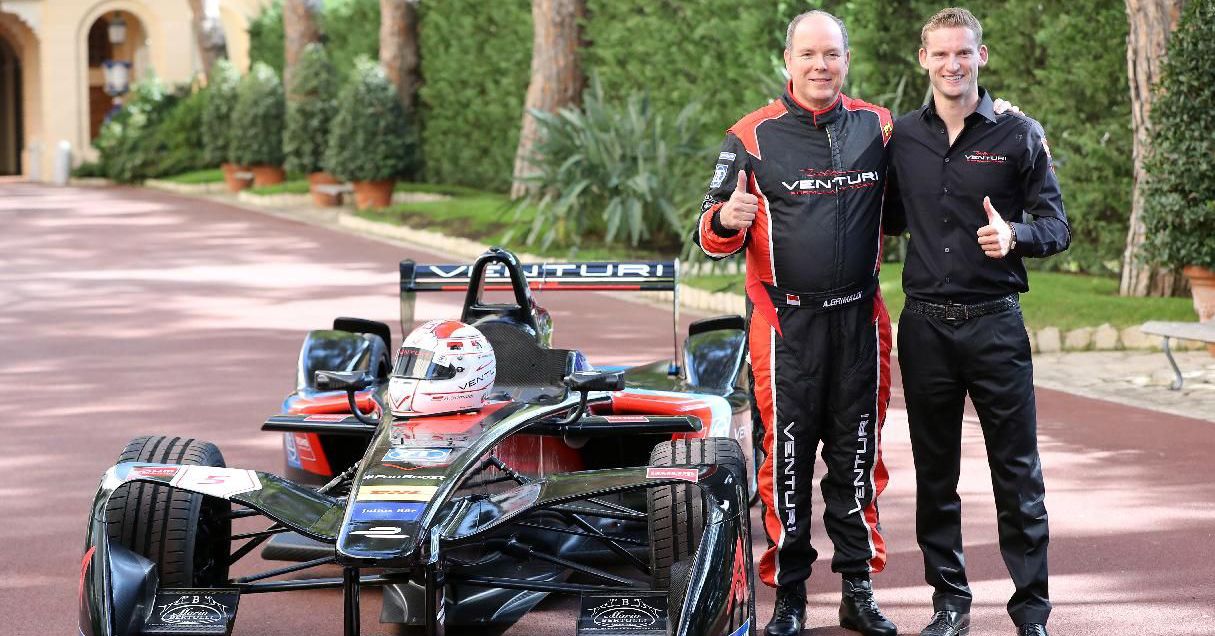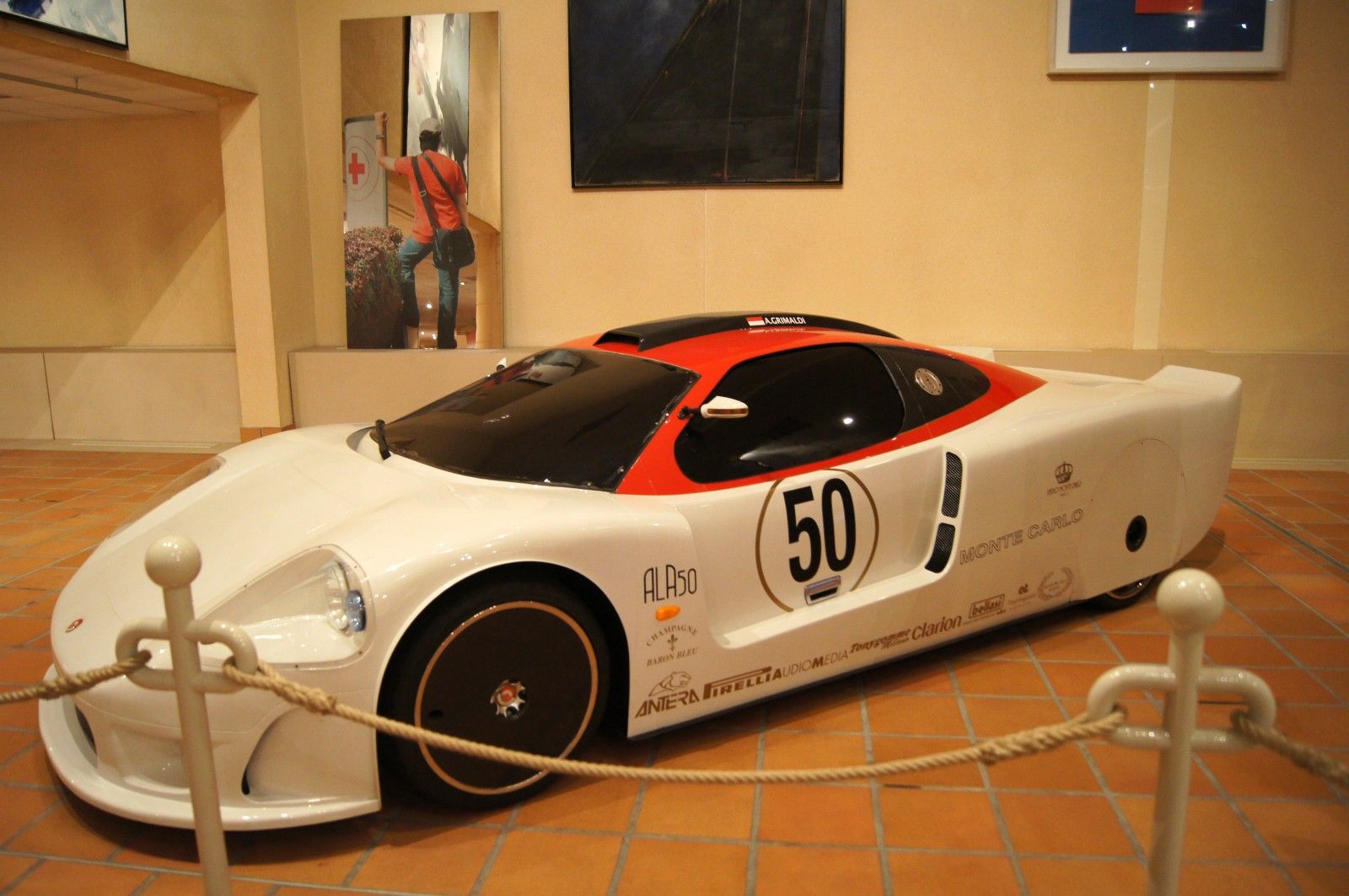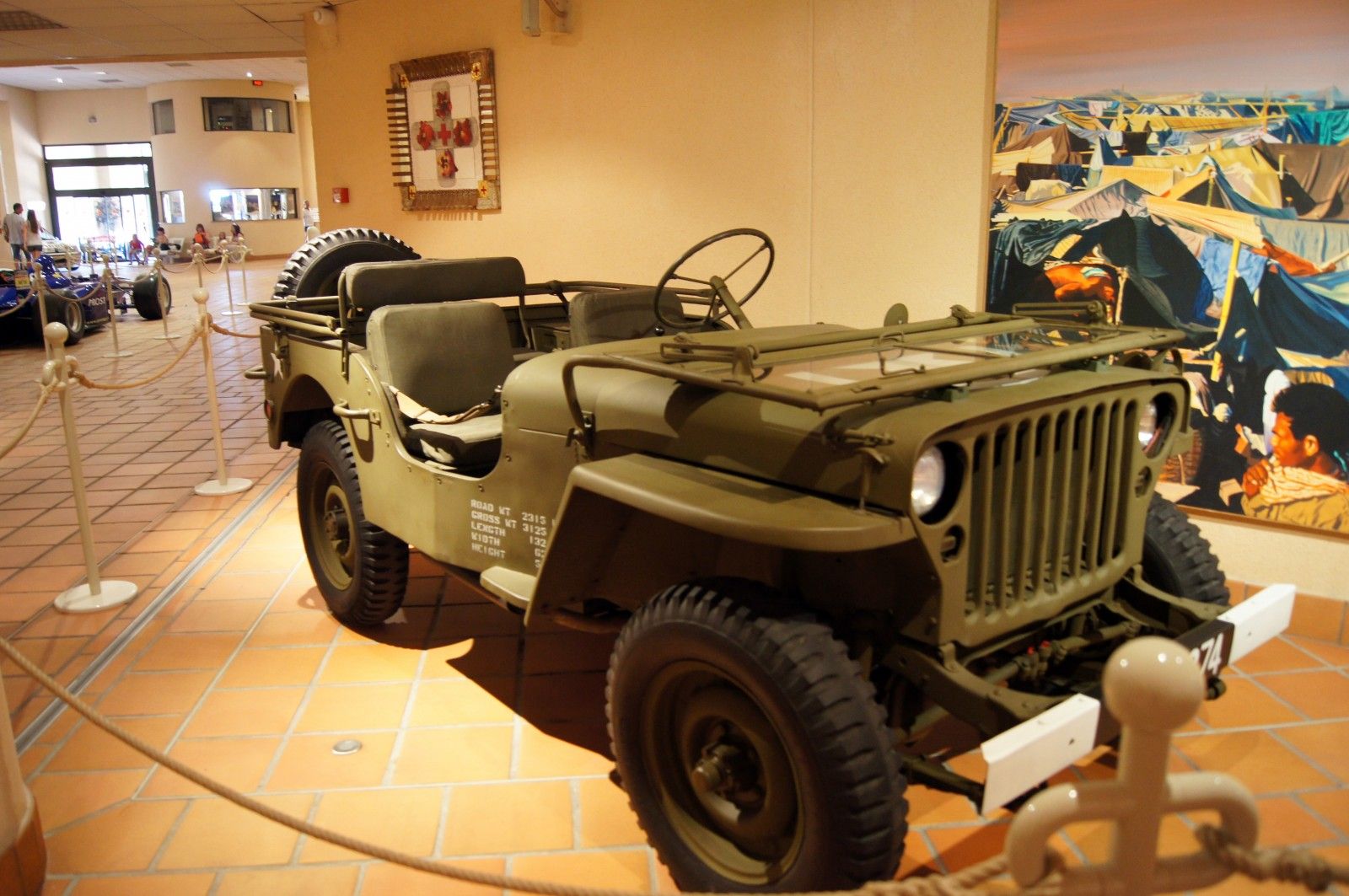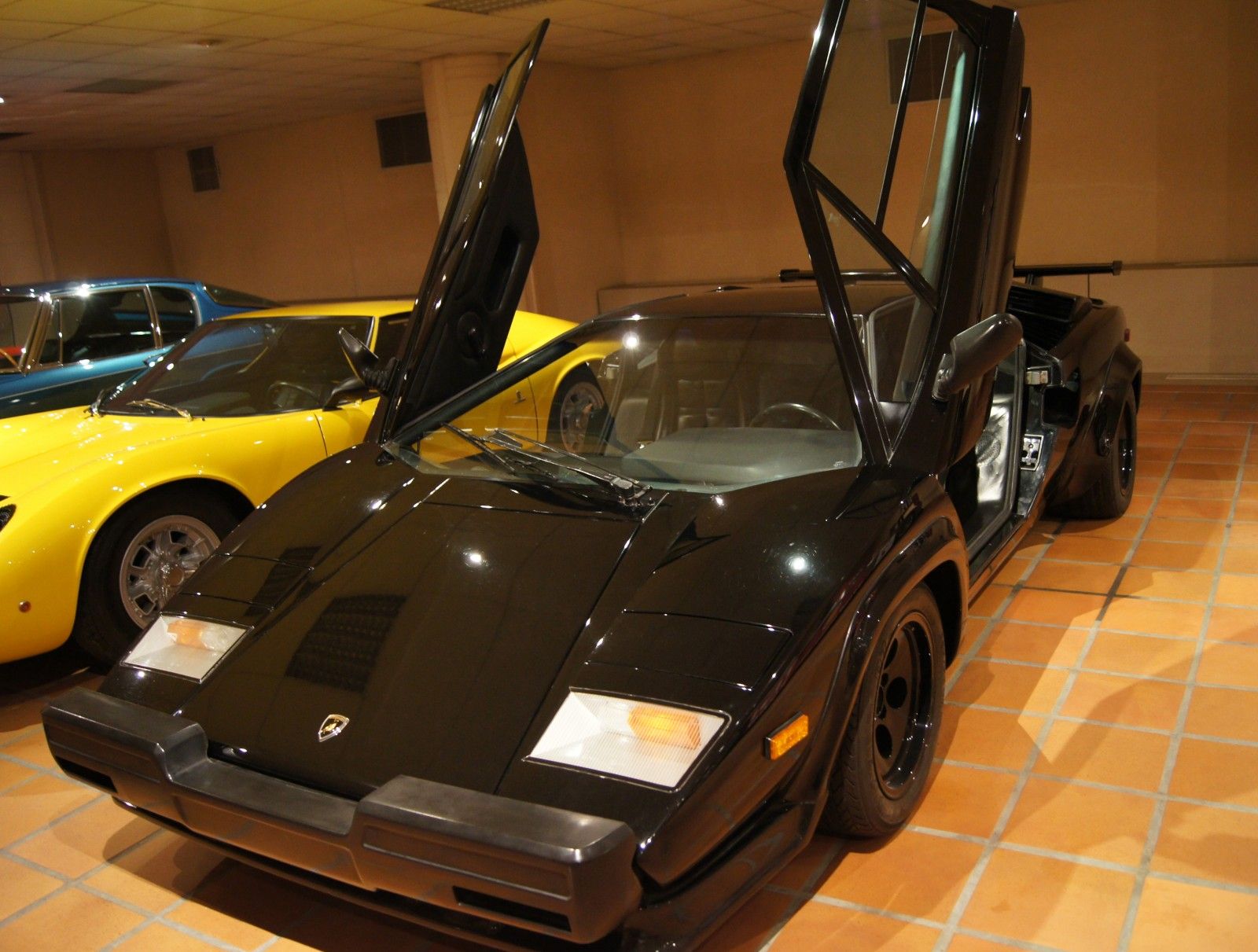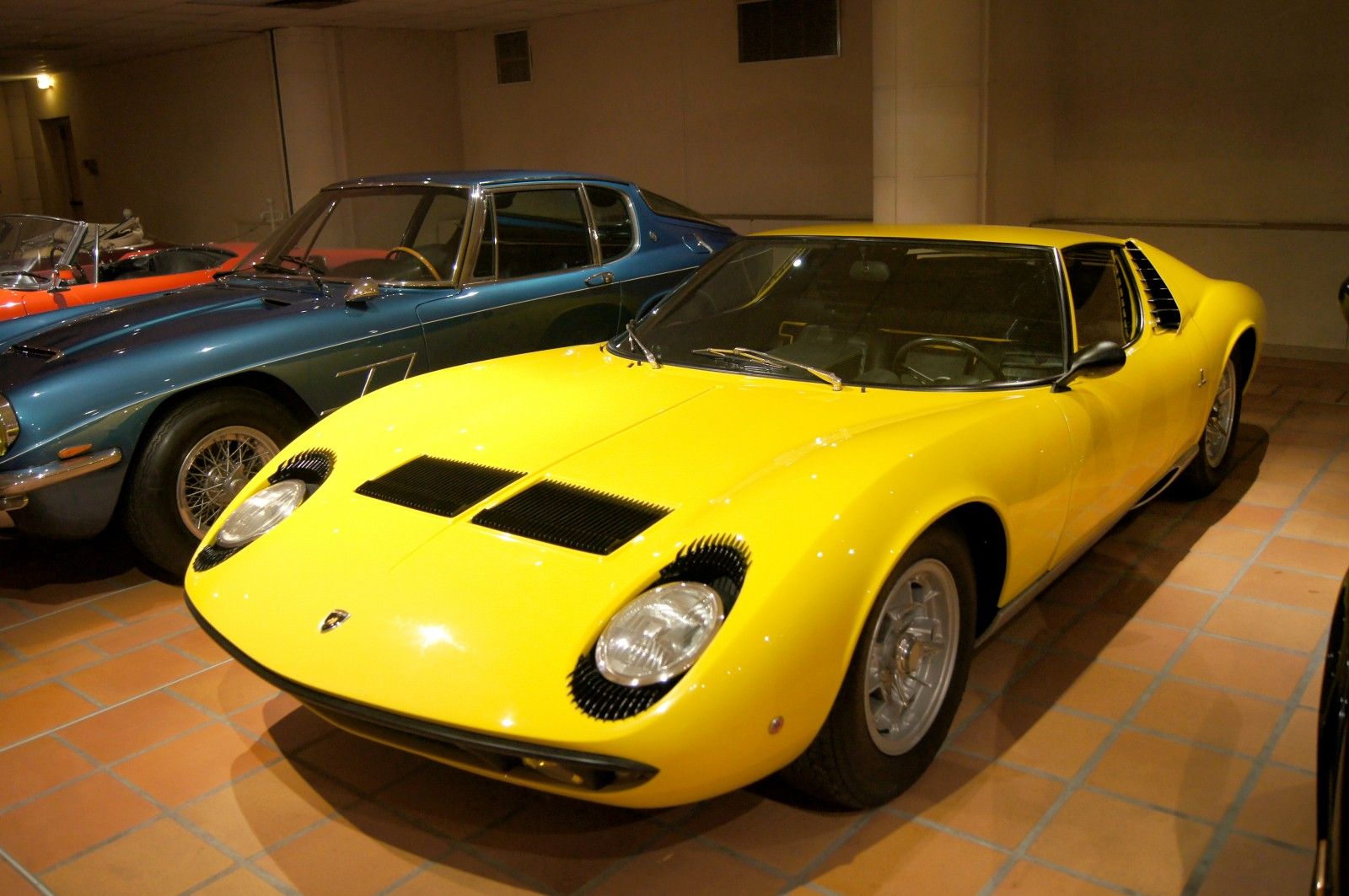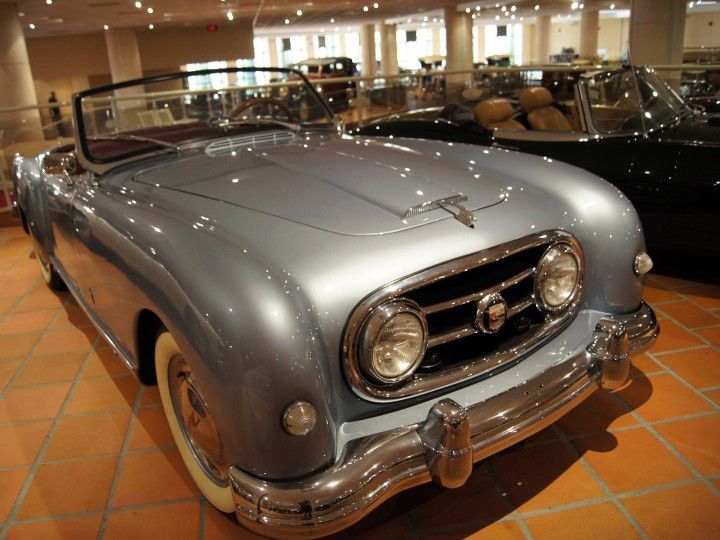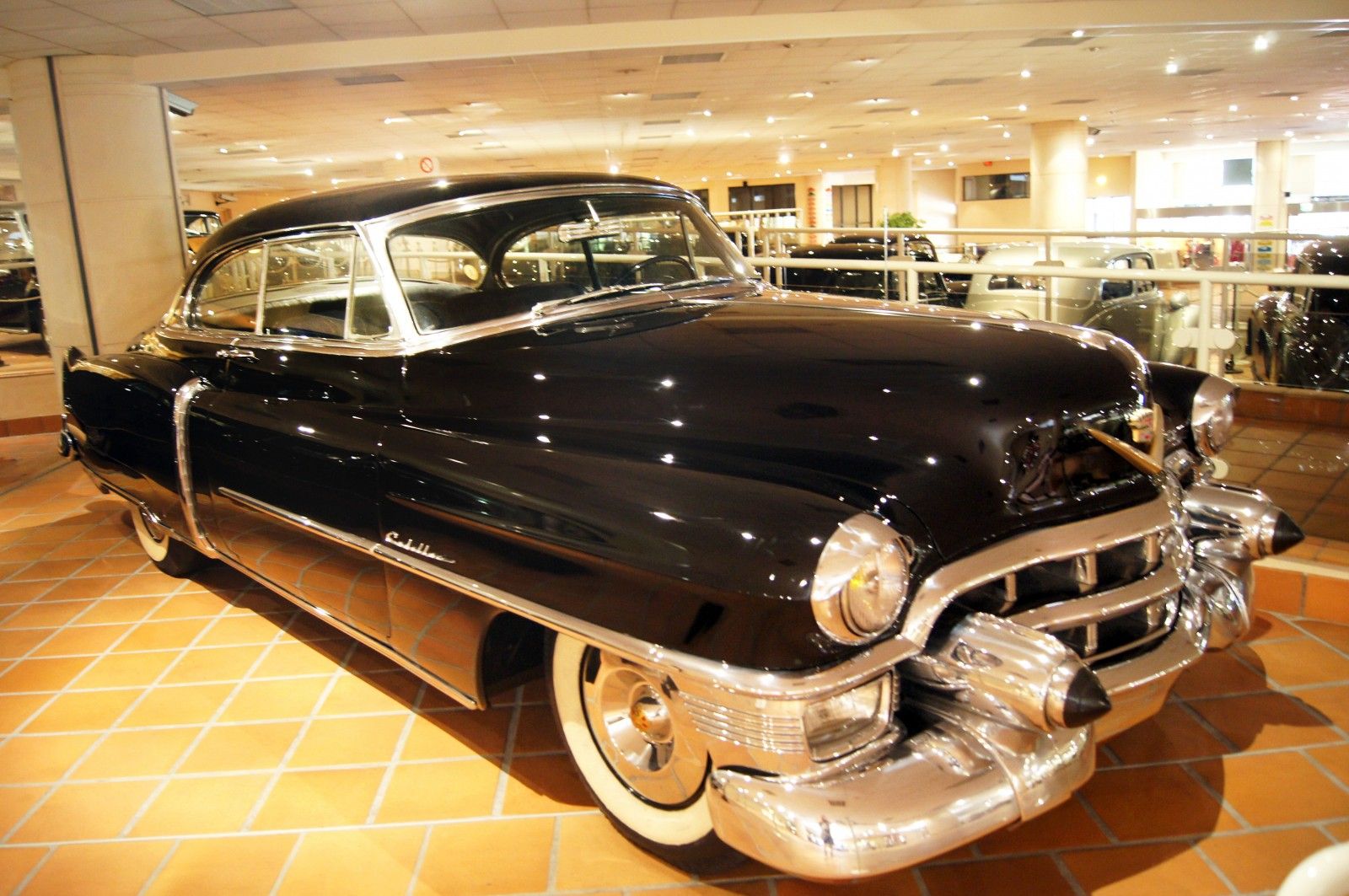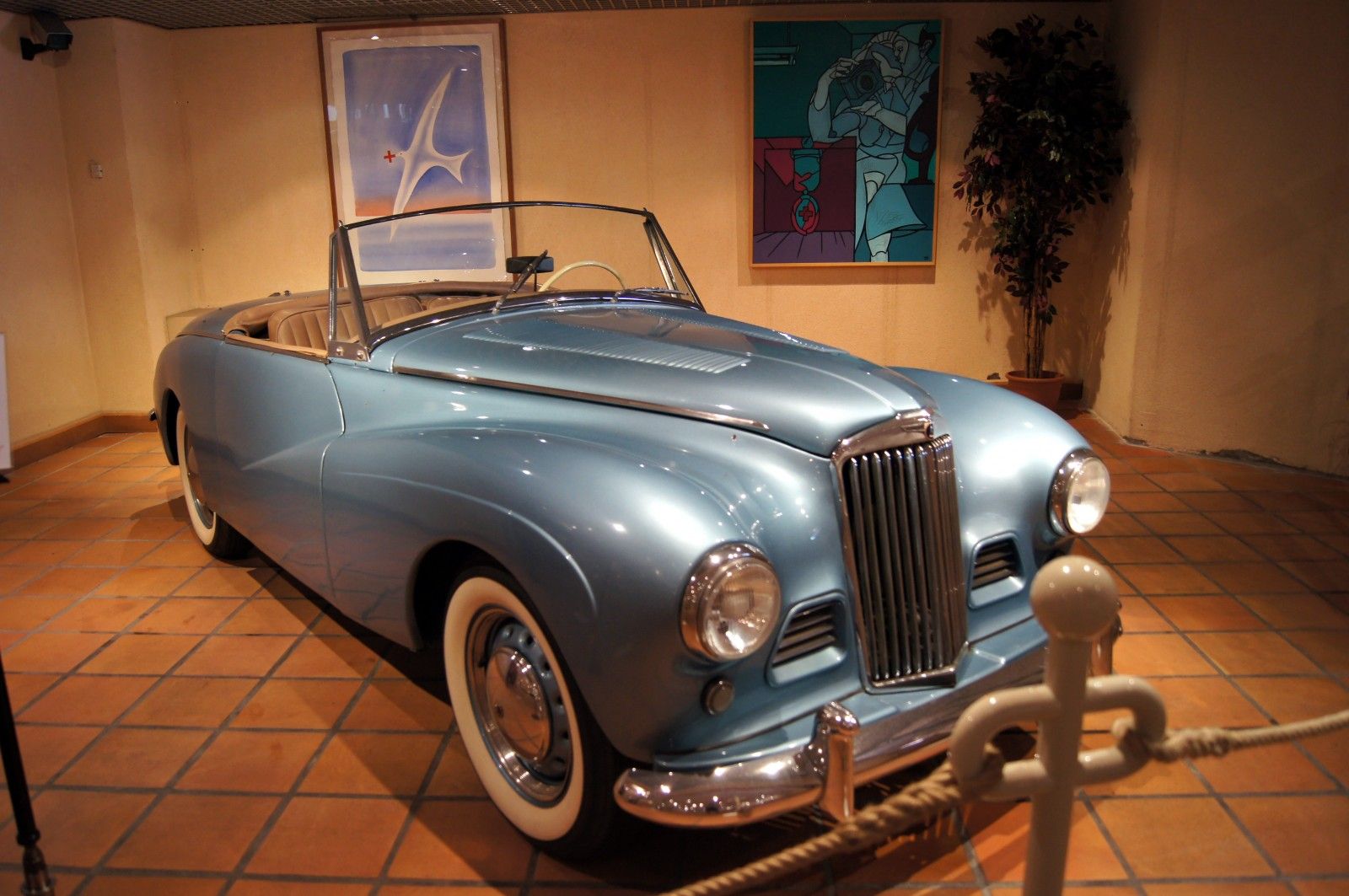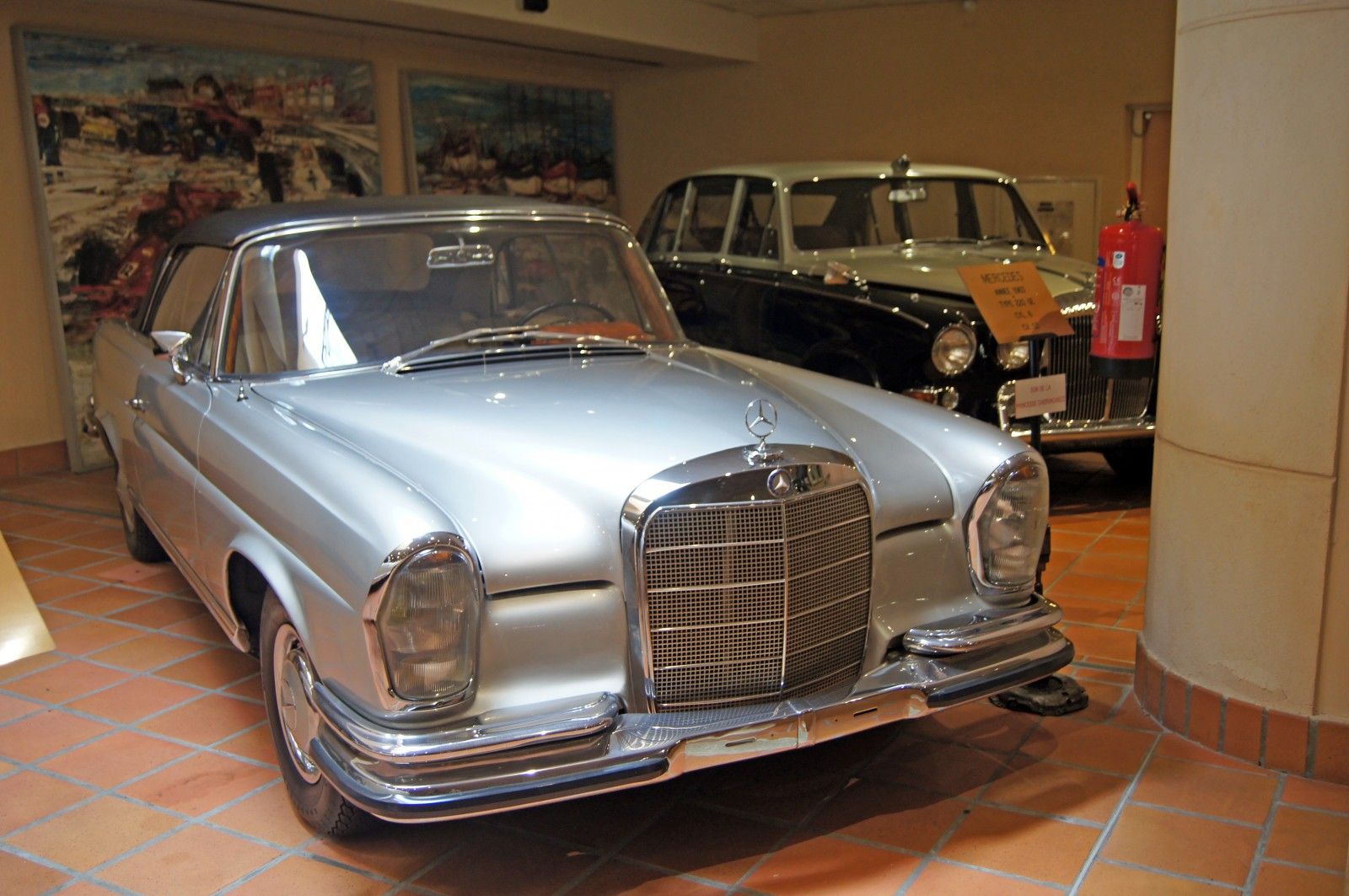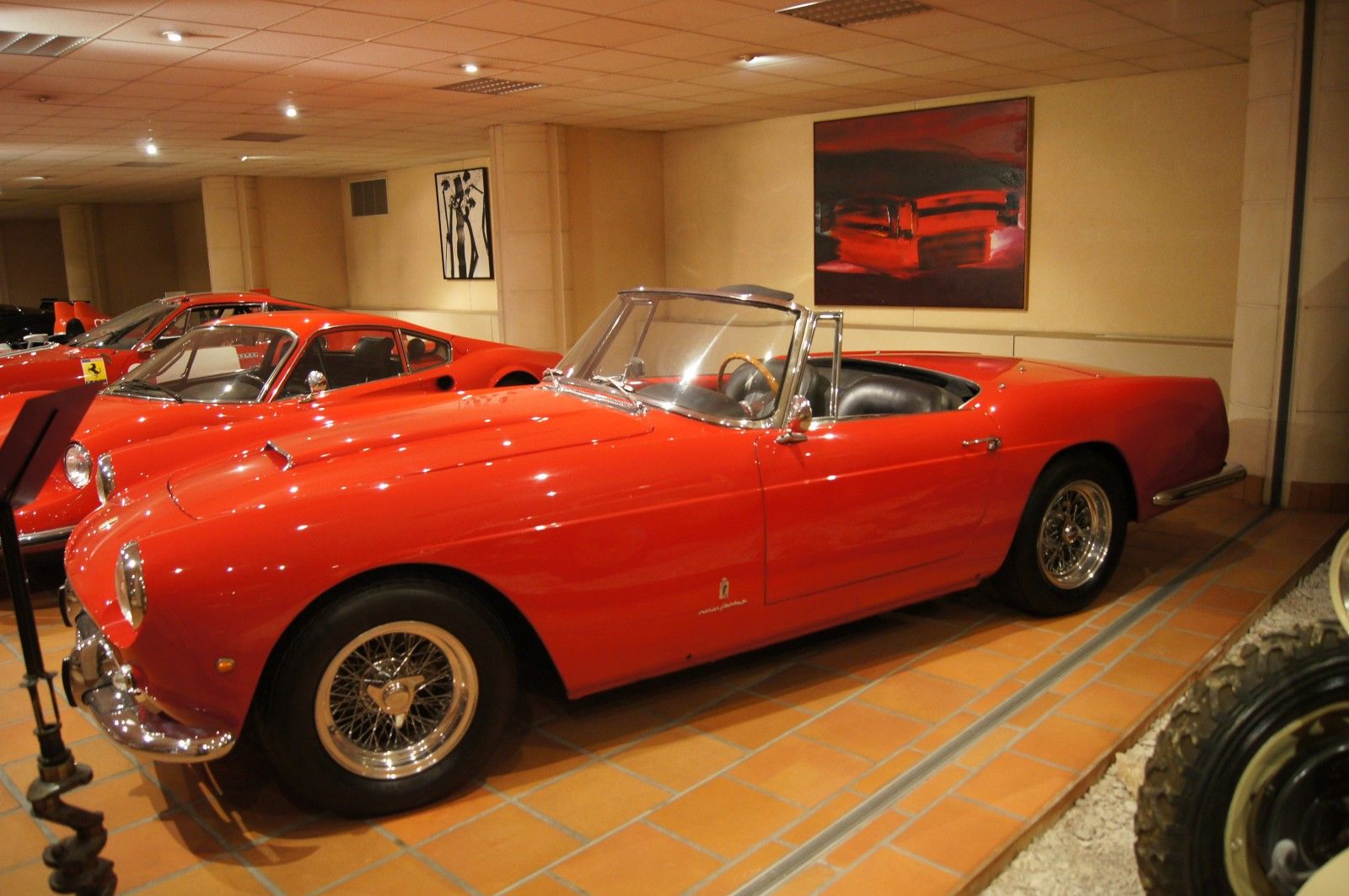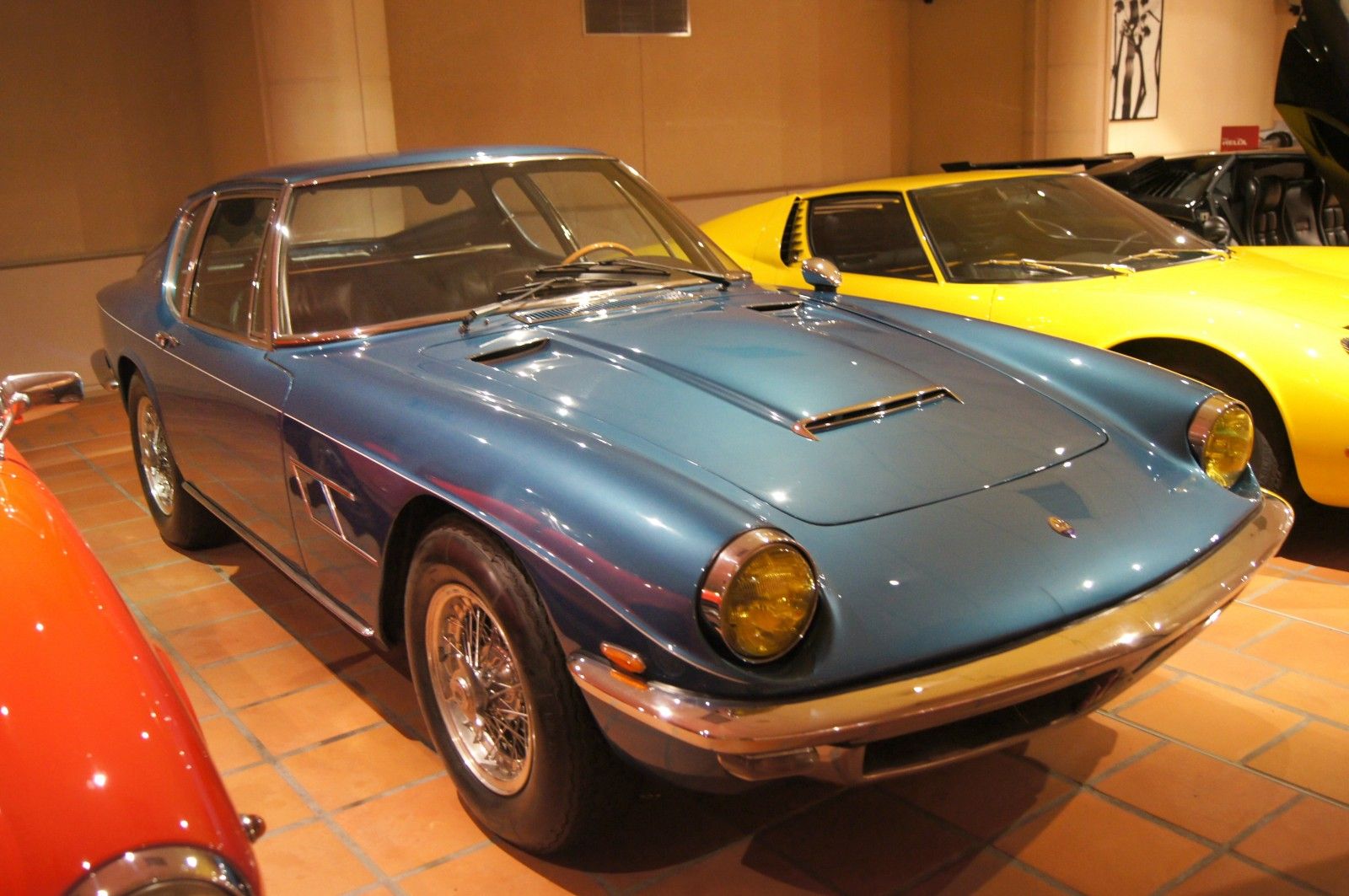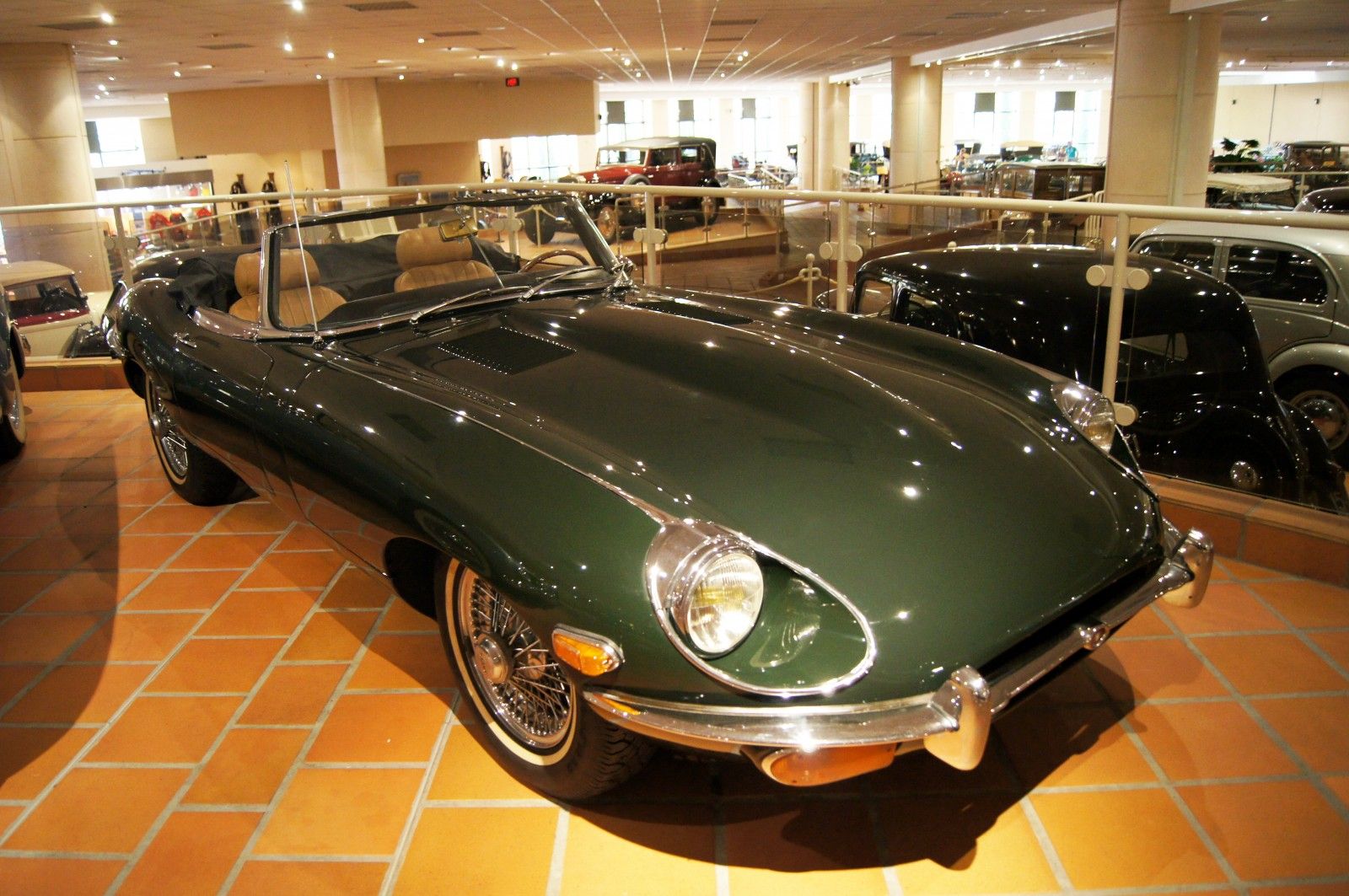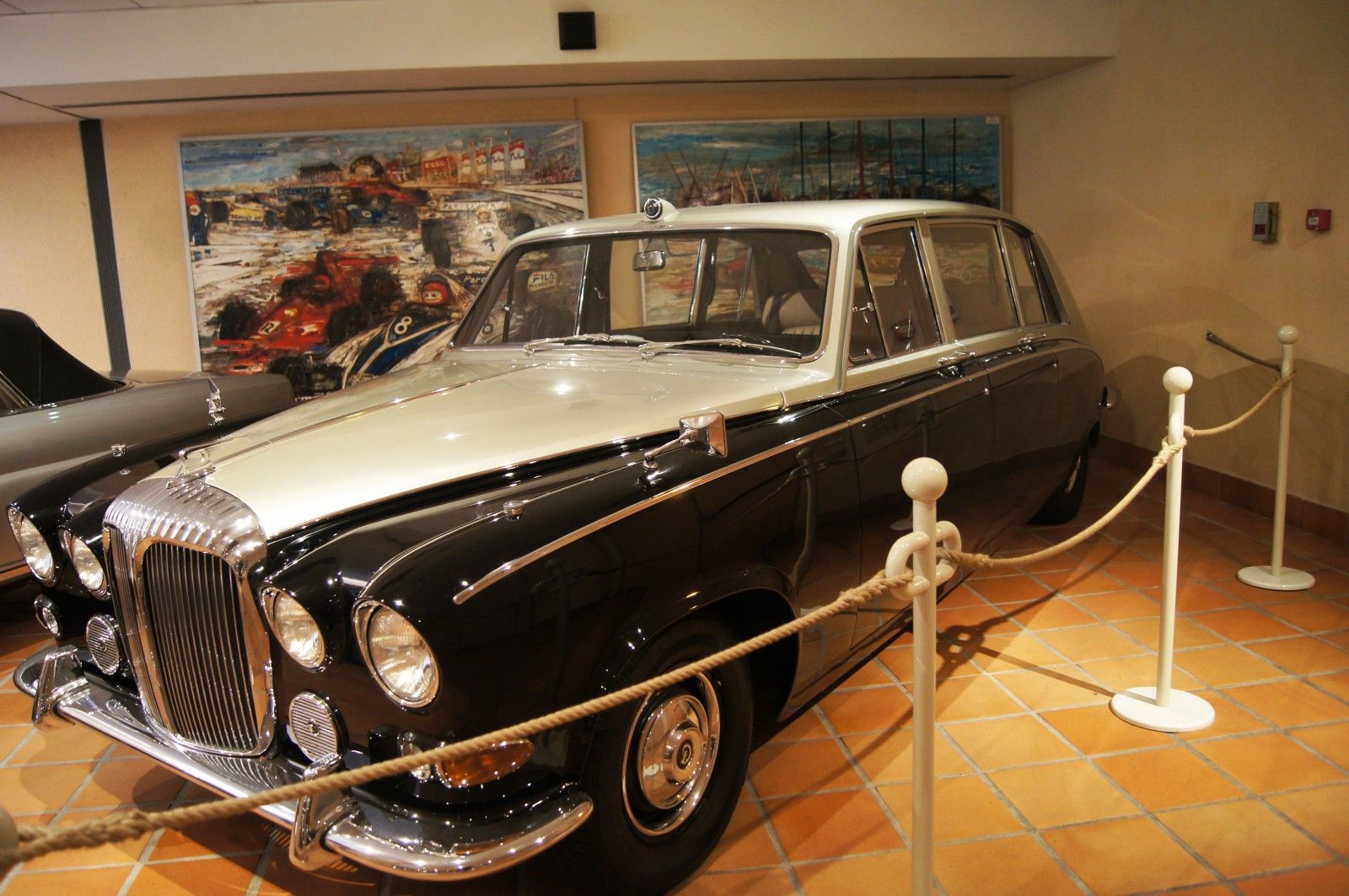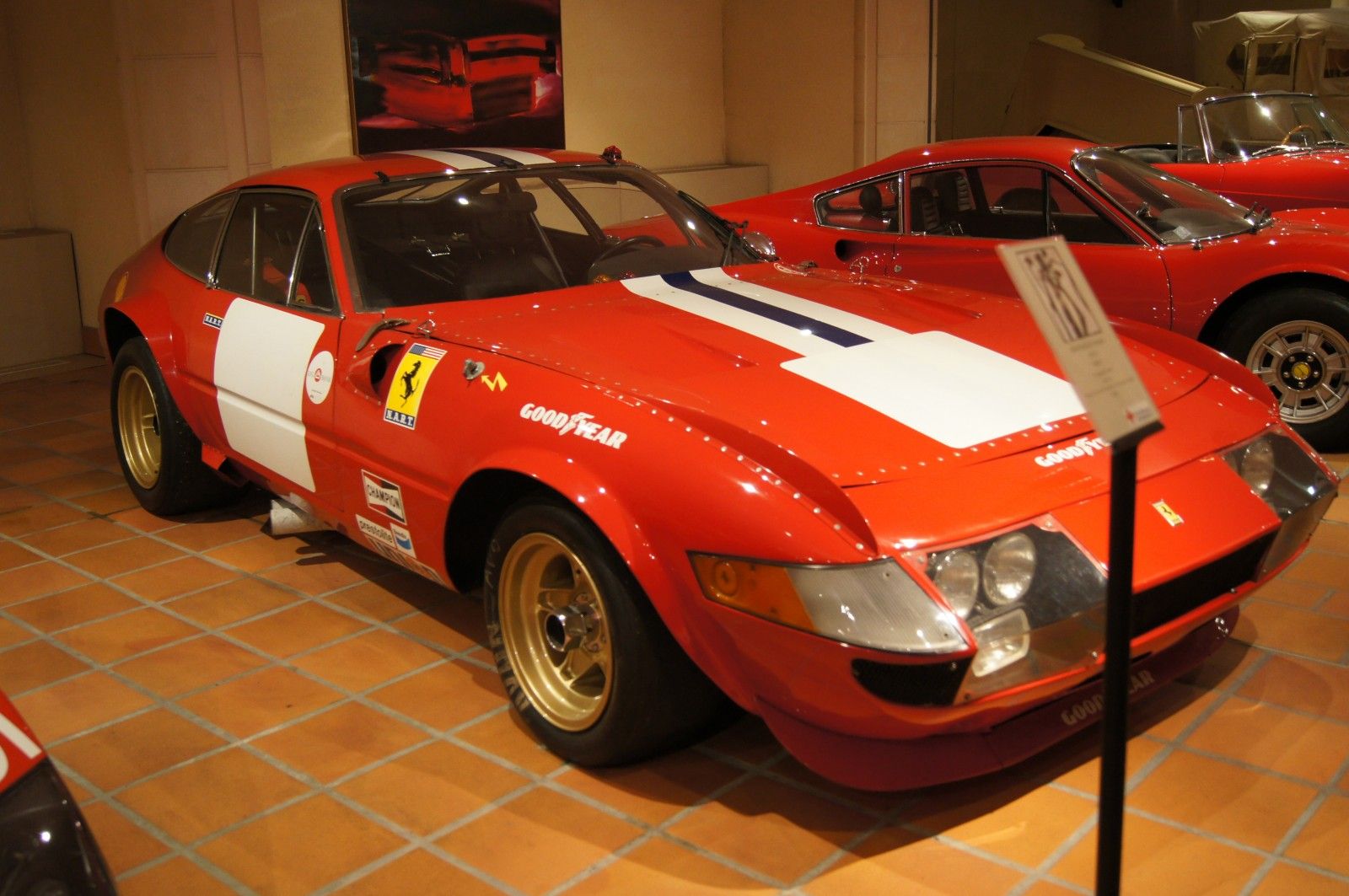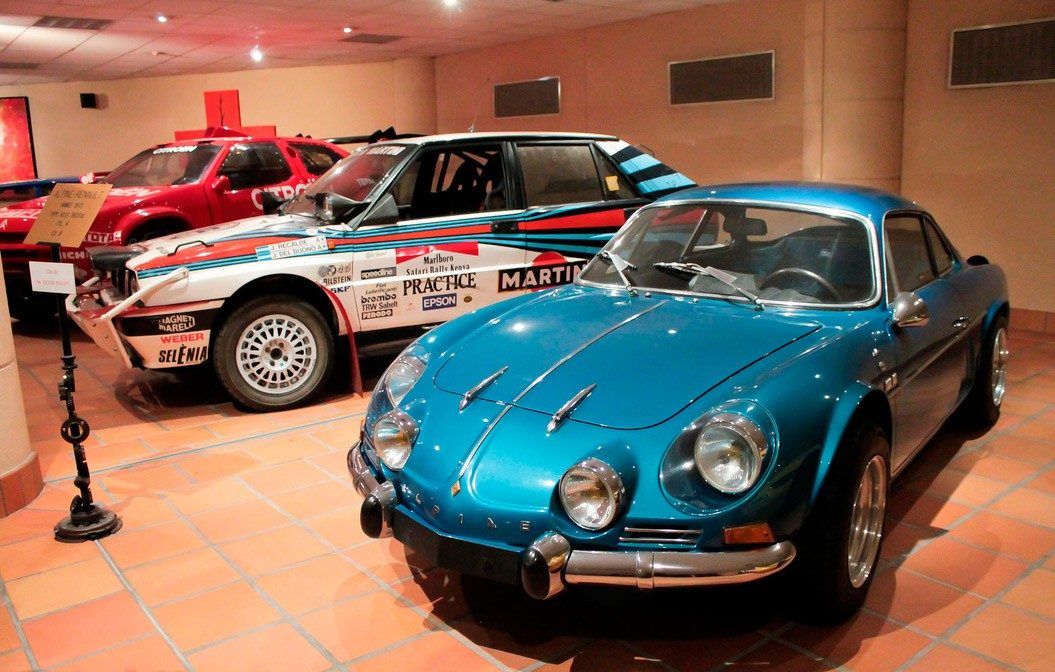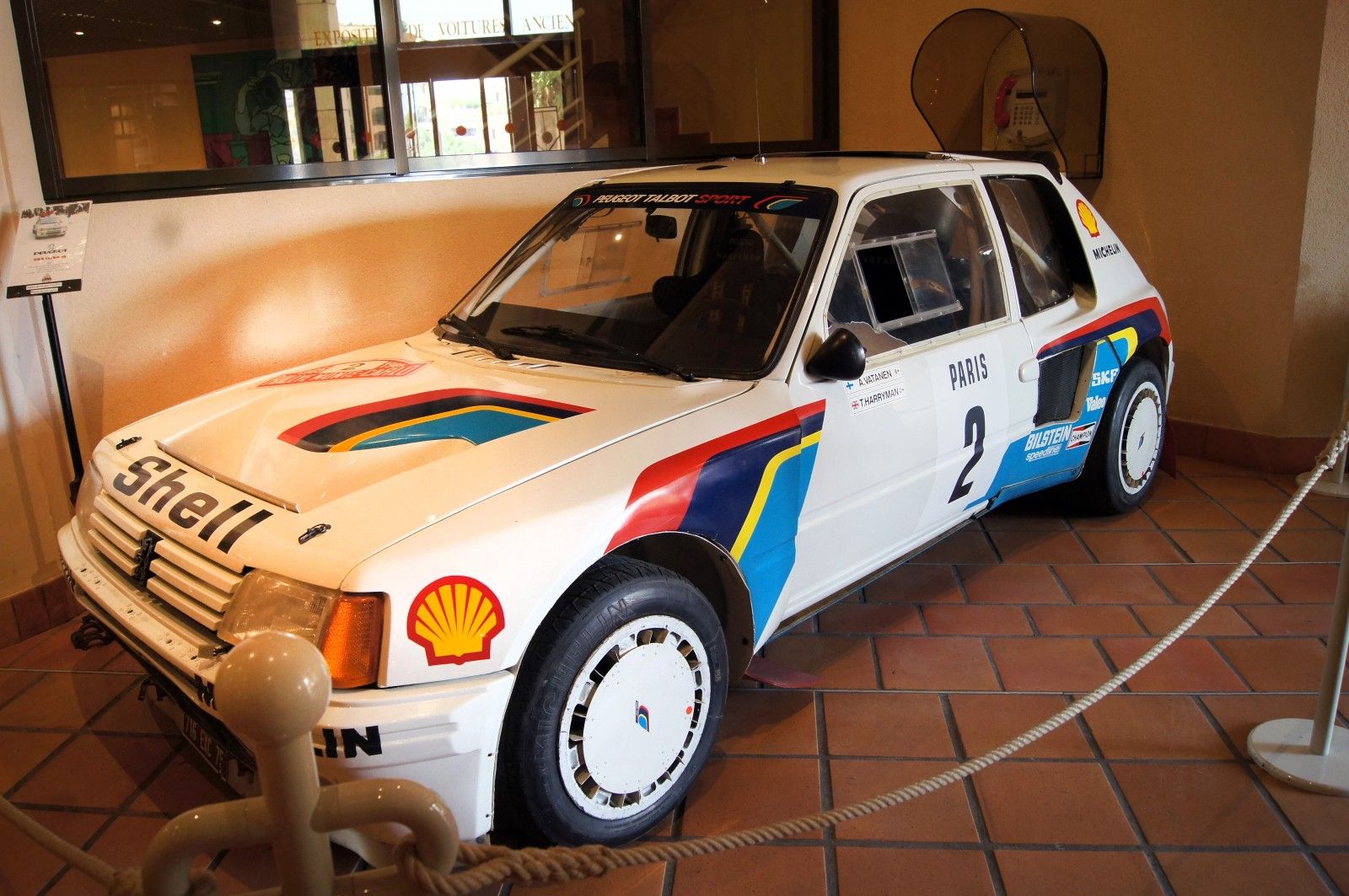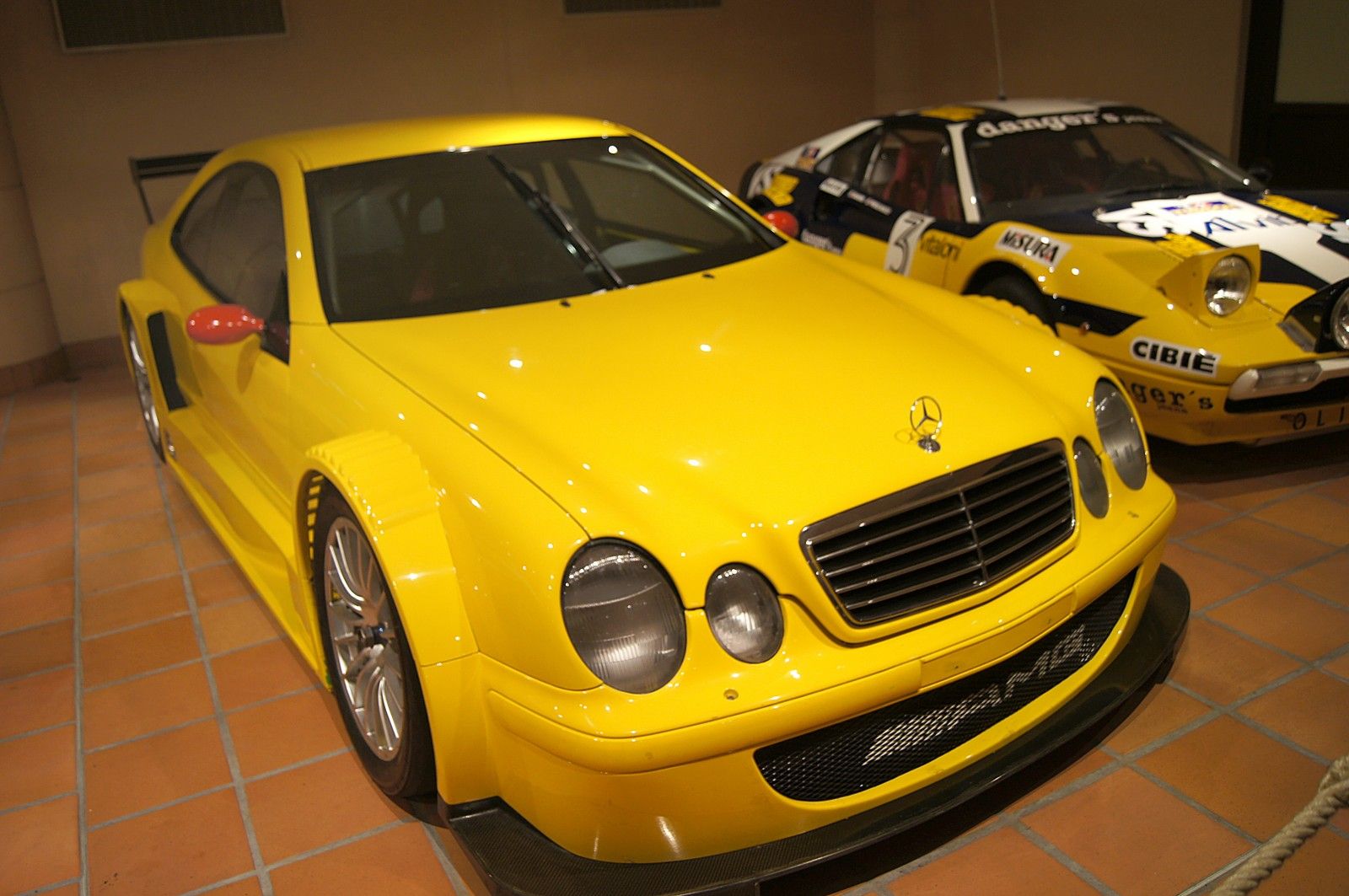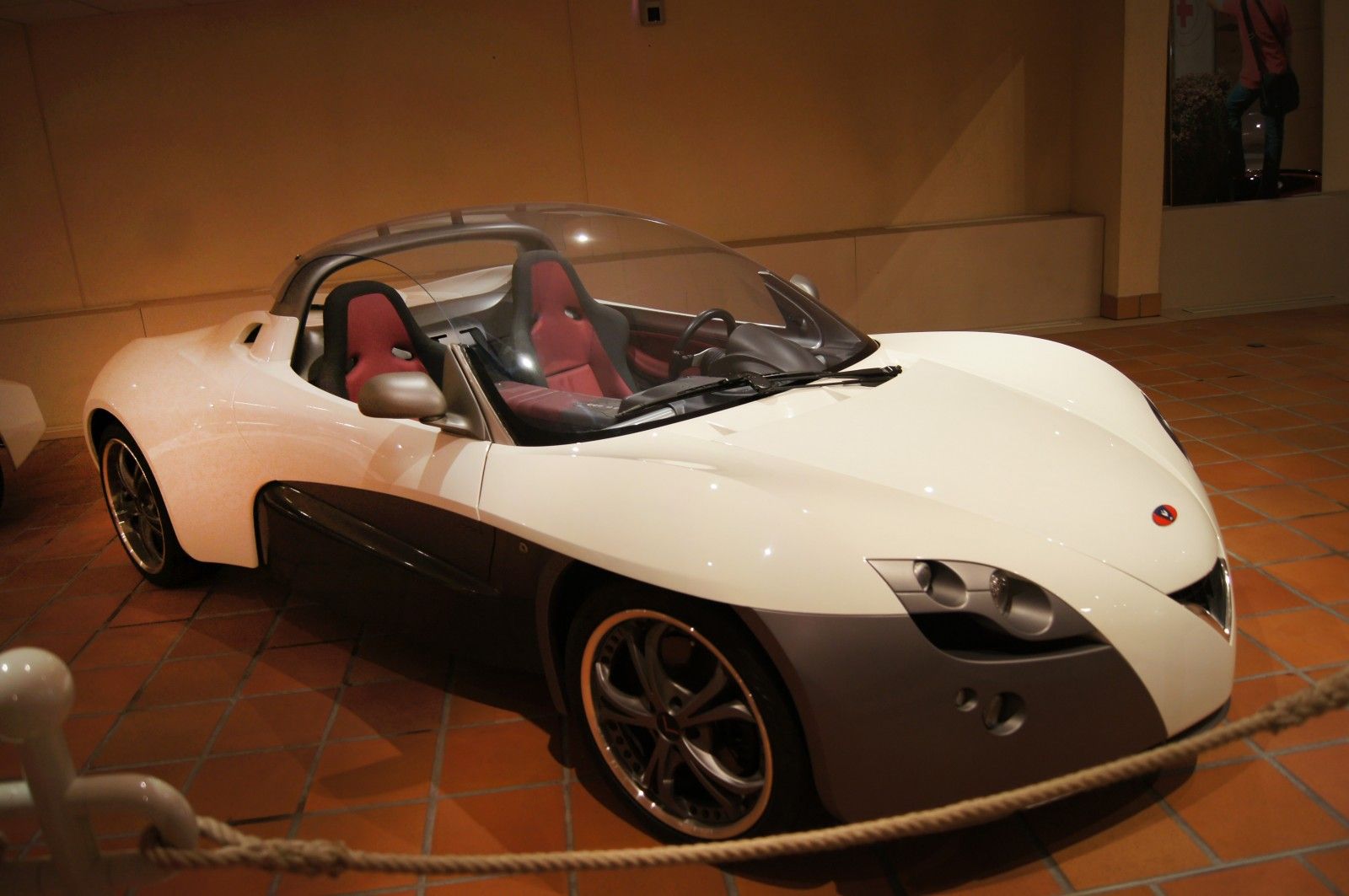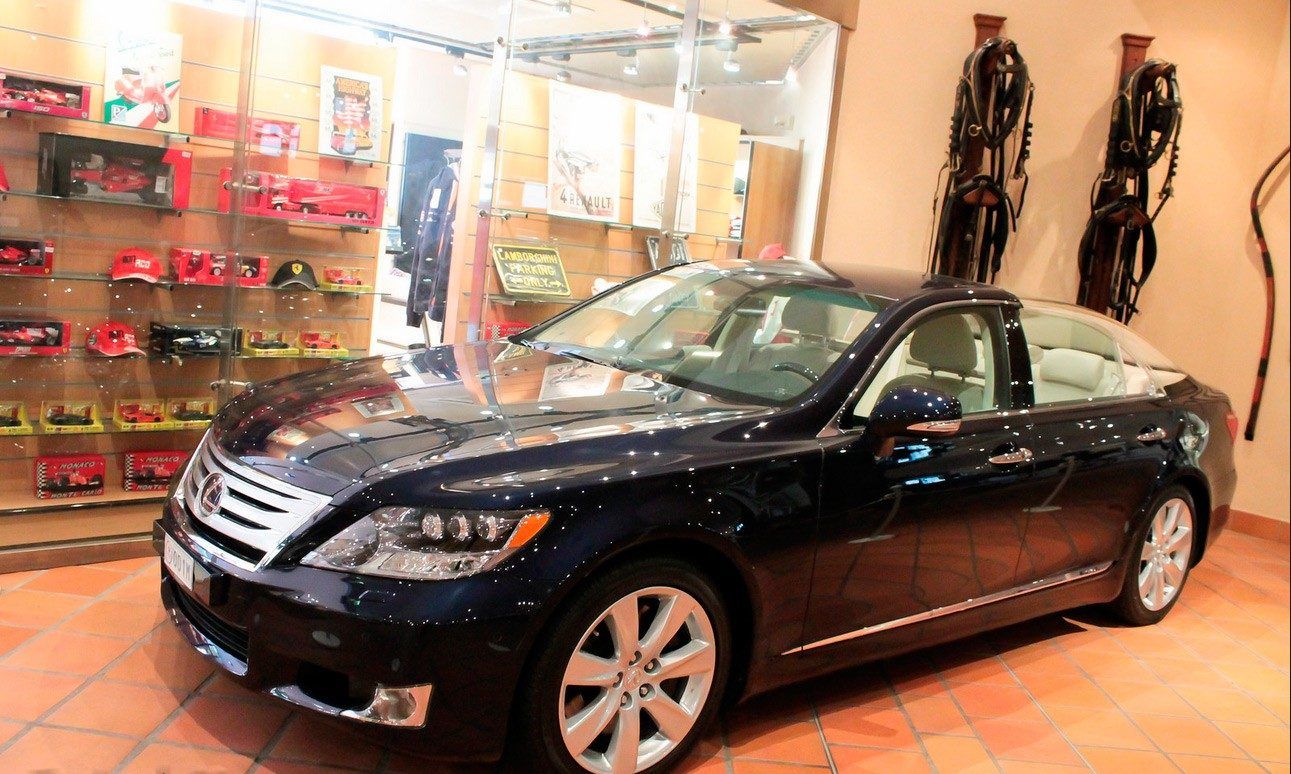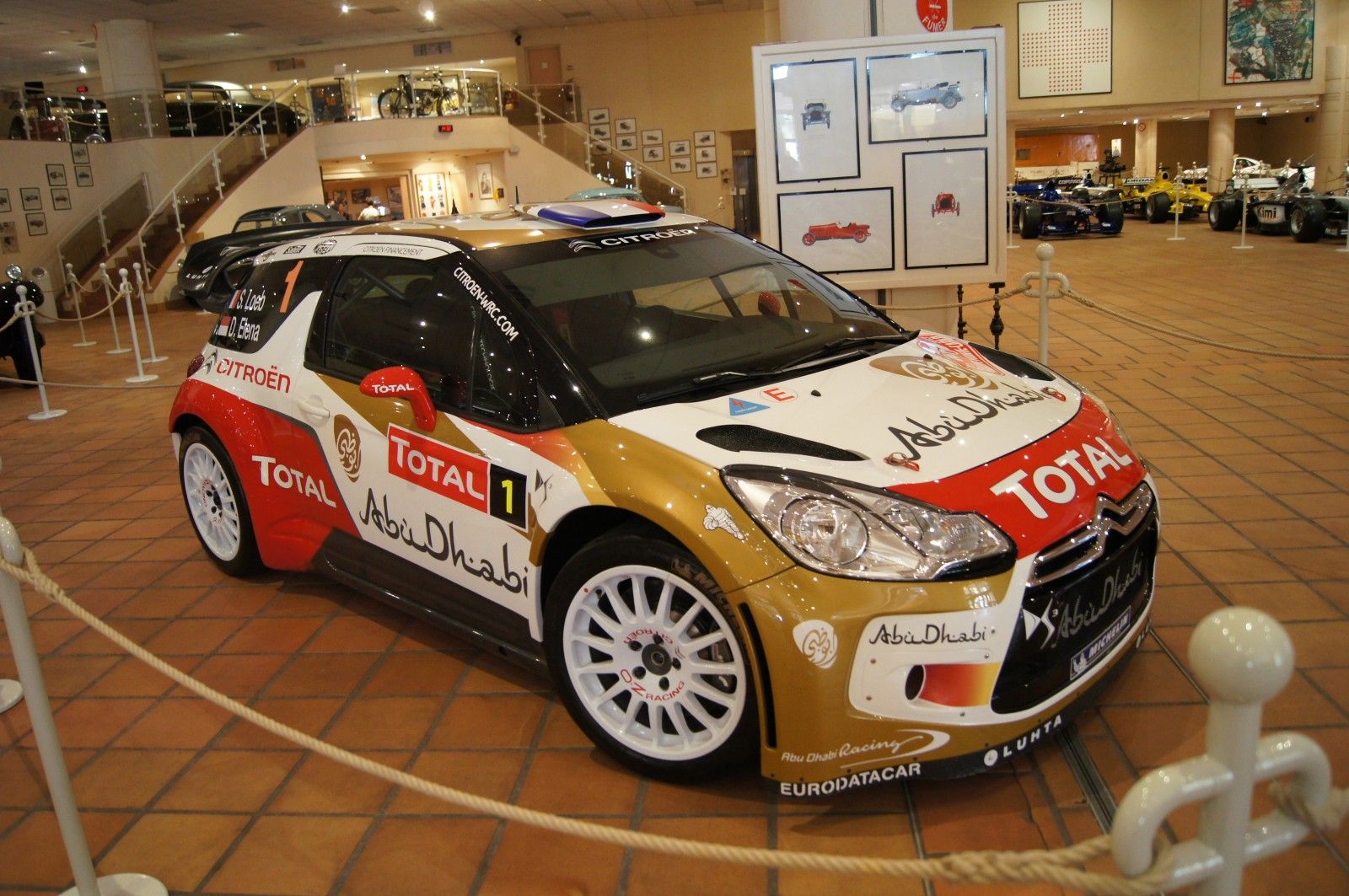Prince Rainer III had a well-known passion for cars. He began collecting them towards the end of the 1950s, but with an evergrowing collection of classic and sporty cars with regal radiator grills and sleek streamlined bodies, the garage at the Prince's Palace was running out of space fast.
In 1993, a 5,000 square feet museum, spanning five levels of specially tailored exhibit space overlooking the Terrasses de Fontvieille at the foot of the Rocher, was opened to the public. It might not be the largest assembly of cars by one collector, but the Princes’s personal collection is a must-see for anyone who is interested in cars, motorsport, and historic vehicles.
It is kind of like time-traveling when walking between these amazing machines that range from the late 1800s till today. The vehicles in the collection are anything from old horse carriages and bargain basement people's cars, to immaculate examples of American classics and British luxury. Of course, since this is Monaco, famous for the Monaco Grand Prix and the Monte Carlo Rally, there are a number of rally and racing cars from different eras on display at the museum as well.
The Monaco Top Cars Collection offers a unique opportunity for everyone, both millionaires and the common man alike, to experience and appreciate motoring history.
The following images are just a small part of the collection, but it shows some of the huge variety that's on display.
25 2009 Monte Carlo Automobile ALA50
Prince Albert II, Sovereign Prince of Monaco and son of Prince Rainer III, unveiled the prototype of the ALA 50, a car that was built to honor of the 25th anniversary of Monaco’s first-ever car brand.
Monegasque car manufacturer Monte Carlo Automobile's founder Fulvio Maria Ballabio designed the ALA 50 and built it in conjunction with father-and-son team Guglielmo and Roberto Bellasi.
The name ALA 50 was a tribute to Prince Albert’s 50th birthday, and also symbolizes the model’s aerodynamic system. The ALA 50 is made entirely of carbon fiber and features a 650-horsepower V8 engine put together by Christian Contzen, the former CEO of Renault Sport, and Daniel Trema, who has been helping engineering firm Mecachrome prepare for the GP2 series.
24 1942 Ford GPW
The Ford GPW and the Willys MB U.S. Army Jeep, both formally called the U.S. Army Truck, 1⁄4 ton, 4×4, Command Reconnaissance, went into production in 1941.
Proven to be exceptionally capable, tough, durable and versatile to such a degree that not only did it become the workhorse of the American military - it literally replaced the use of horses in every military role. According to General Eisenhower, most senior officers regarded it as one of the six most vital U.S. vehicles to win the war
Today, these small four-wheel drive utility vehicles are considered as icons, and they've been a source of inspiration for many similar light utility vehicles through the evolution of the civilian Jeep.
23 1986 Lamborghini Countach 5000QV
The Lamborghini Countach was a mid-engined supercar in production from 1974 to 1990. The Countach's design pioneered the wedge-shape that became so popular with supercars of the time.
The U.S. car magazine Sports Car International placed the Countach 3rd on the list of the "Top Sports Cars of the 70s" back in 2004.
The Countach 5000QV had a bigger 5.2L engine than the previous 3.9-4.8L available, it was also given 4 valves per cylinder - Quattrovalvole in Italian - Hence the name QV.
While the "normal" Countach had poor rearward visibility, the 5000QV had practically zero visibility due to the hump on the engine cover that was needed to make space for the carburetors. 610 5000QVs were made.
22 1967 Lamborghini Miura P400
When the Lamborghini Miura was launched in 1966 it was the fastest production road car available and is considered to have started the trend of high performance, two-seater, mid-engined sports cars.
Ironically, Ferruccio Lamborghini wasn't a fan of racecar-derived machines. He preferred making grand touring cars, so the Miura was conceived by Lamborghini's engineering team during their free time.
Both the press and showgoers welcomed the prototype P400 with open arms at the 1966 Geneva show, everyone praised its revolutionary design and sleek styling. The Miura had received periodic updates by the time production ended in 1972, but wasn't replaced until the Countach went into production in 1974.
21 1952 Nash Healey
The two-seater sportscar Nash-Healey was the flagship model for Nash and "America's first post-war sports car," the first introduced in the U.S. by a major automaker since the Great Depression.
Produced for the market between 1951 and 1954, it featured the Nash Ambassador drivetrain and a European chassis and body which was restyled by Pininfarina in 1952.
Due to the Nash-Healey being such an international product, there were considerable shipping costs involved. The Nash engines and drivelines were sent from Wisconsin to England to install the Healey-fabricated frames. Thereafter, the rolling chassis went to Italy so Pininfarina could do the bodywork. The finished car was then exported to America, resulting in a price of $5,908, while the new Chevrolet Corvette was $3,513.
20 1953 Cadillac Series 62 2-Door
The Cadillac Series 62 on display is the 3rd generation of the model, introduced in 1948 as the first Series 62 with tail fins. It received considerable styling updates in 1950 and 1953, making the later models like this one lower and sleeker, with a longer hood, and a one-piece windshield.
In 1953 the Series 62 received a redesigned grille with heavier integral bumper and bumper guards, the parking lamps were repositioned directly under the headlights, chrome "eyebrow" type headlamps, and a one-piece rear window without division bars.
This was also the last year of the 3rd generation, it was replaced in 1954 and a total of seven generations were made before production ended in 1964.
19 1954 Sunbeam Alpine Mark I Roadster
Here's a fun fact for you: A sapphire blue Alpine was prominently featured in the 1955 Hitchcock movie To Catch A Thief, starring Grace Kelly - who married Prince Rainer III, the guy behind this collection, the following year.
The Alpine Mark I and Mark III (strangely, there wasn't a Mark II) were hand-built at Thrupp & Maberly coachbuilders from 1953 to 1955 and remained in production for only two years. 1582 cars were produced, 961 were exported to the USA and Canada, 445 stayed in the UK, and 175 went to other world markets. It's estimated that perhaps as few as 200 have survived, which means that for most of us, our only chance to see one in the flesh will be at the Exhibition of HSH The Prince of Monaco's Vintage Car Collection
18 1959 Fiat 600 Jolly
There are some rather quirky cars in the Prince's collection, like a 1957 Citroen 2CV and its bigger sibling, the 1957 Citroen 4CV. And of course, there's a classic 1960 BMW Isetta 300 which features a single front door.
No matter how cute and quirky those cars are, none are at the level of the Fiat 600 Jolly.
The 600 Jolly has virtually no practical use whatsoever, except that of pure enjoyment.
It has wicker seats, and the fringed top to help shield the occupants from the Mediterranean sun was an optional extra.
Believe it or not, but the 600 Jolly was a luxury vehicle for the wealthy, originally designed to be used on large yachts the price was almost double that of the standard Fiat 600. Less than 100 still exist today.
17 1963 Mercedes Benz 220SE Cabriolet
The Mercedes W111 was the precursor to the modern S-Class, it represented Mercedes' shift from the little Ponton-style sedans they made in the postwar era to more upscale, elegant designs that would influence the automaker for decades and create their legacy as one of the finest automobiles mere mortals can buy.
The car in the collection is a 2.2-liter 6-cylinder engined convertible. The soft-top roof folds into a recess behind the rear seat and gets covered by a tightly fitting leather "boot" in the same color as the seats. Unlike the previous generation of two-door ponton series, the 220SE designation was used for both the coupe and convertible.
16 1963 Ferrari 250 GT Cabriolet Pininfarina Series II
The Ferrari 250 was produced from 1953 to 1964 and offered a completely different driving experience than those of Ferrari's race-ready vehicles. With a performance on par with what people had come to expect from Maranello's finest, the 250 GT Cabriolet also offered luxurious trimmings to please Ferrari's most demanding customers.
The Series II, first unveiled at the 1959 Paris Motorshow, offered a number of stylistic changes and mechanical updates over the first version, as well as more interior space for better comfort, and a slightly larger trunk. Performance was taken care of by the newest iteration of the Colombo V12 engine, and with disc-brakes front and rear, the car would be able to slow down effectively. 212 were produced, so odds are you'll never see one outside the museum.
15 1968 Maserati Mistral
Attempting to follow up the commercial success obtained by the 3500 GT Touring, Maserati introduced their new Mistral two-seater coupe at the 1963 Turin Motor Show.
Designed by Pietro Frua, it is generally considered one of the most beautiful Maseratis of all time.
The Mistral is the last model from the Casa del Tridente (“House of the Trident”) to have the company's renowned "warhorse" straight six engine that was being used in both the racing and road cars. Fitted to the Maserati 250F Grand Prix cars, it won 8 Grand Prix between 1954 and 1960 and one F1 World Championship in 1957 driven by Juan Manuel Fangio.
14 1969 Jaguar E-Type Cabriolet
The Jaguar E-Type (Jaguar XK-E) had the perfect combination of good looks, high performance and competitive pricing - which helped establish the marque as a true icon of 1960s motoring. Enzo Ferrari called it the "Most beautiful car of all time."
The car in the Prince's collection is the later Series 2 version which received several updates, mostly to comply with U.S. regulations. The most notable changes were the glass headlight covers were removed, and it has lower performance as a result of switching from the three carburetors to two. The interior had a new design as well as new seats which allowed the fitment of head restraints.
13 1970 Daimler DS 420
The Daimler limousine DS420 was produced between 1968 and 1992. These vehicles are used extensively as official state cars in several countries, including by the British, Danish and Swedish royal houses. They are also quite commonly used in both funeral and hotel trades.
The top speed available from this 245 bhp, three-speed automatic, independently suspended, four-wheel disc braked Daimler limousine was 110 mph. By undercutting the Rolls Royce Phantom VI in price by 50% or more, the big Daimler was considered to be an incredible vehicle for the price, especially since it had a Le Mans-winning Jaguar engine, the last car to use it, and bespoke construction.
12 1971 Ferrari 365 GTB/4 Daytona Competizione
The collection has several vintage Ferrari race and rally cars, there's a 1971 Ferrari Dino 246 GT, a 1977 Ferrari 308 GTB FIA Group 4 rally car, and a 1982 Ferrari 308 GTB, but we'll focus on the 1971 365 GTB/4 Daytona.
While the Ferrari 365 GTB/4 Daytona had been introduced at the 1968 Paris Auto Show, more than a year passed before production of the official Ferrari 365 GTB/4 Competition Daytonas started. One car had been prepared in order to race at Le Mans, but it crashed in practice and was then sold.
The official competition cars were built in three batches, for a total of 15 cars, between 1970-1973. Each had a lighter-than-stock body, saving as much as 400 pounds through the extensive use of aluminum and fiberglass, and plexiglass side windows.
11 1971 Alpine A110
The charming little Frenchman Alpine A110 was manufactured from 1961 to 1977.
The car was styled as a "Berlinette", which in the post-WWII era refers to a small enclosed two-door Berline, or coupe in normal-speak. The Alpine A110 succeeded the earlier A108 and was powered by a variety of Renault engines.
The Alpine A110, also known as the "Berlinette," was a sports car produced by the French manufacturer Alpine from 1961 to 1977. The Alpine A110 was introduced as an evolution of the A108. The A110 was powered by various Renault engines.
The A110 fits in perfectly with the Monaco collection, back in the 70s it was a successful rally car, even claiming victory in the 1971 Monte Carlo Rally with the Swedish driver Ove Andersson.
10 1985 Peugeot 205 T16
This very car was the winner of the 1985 Monte Carlo Rally, driven by Ari Vatanen and Terry Harryman. With a weight of only 900 kg and a 1788cc turbo engine that produced 350 hp, it's easy to see why this period is referred to as the golden age of rallying.
There are several other rally cars at the museum, both from the same era and newer machinery, like the 1988 Lancia Delta Integrale driven by Recalde and Del Buono. Of course, the legendary 1987 Renault R5 Maxi Turbo - Super Production with a 1397cc turbo engine pushing out a massive 380 hp piloted by Eriс Comas deserves to be mentioned as well.
9 2001 Mercedes Benz C55 AMG DTM
The CLK C55 AMG DTM sports car is a special edition of the CLK coupé made to look like the race car used in the DTM, racing series with a substantially widened body, a massive rear wing and huge weight savings that, among other things, included removing the rear seat.
Of course, the CLK DTM couldn't have a standard engine under the hood, so a 5.4L supercharged V8 with 582hp was installed, resulting in a 3.8 second 0-to-60 time and the top speed was limited to 200 mph. Only 180 CLK DTMs were made, 100 of them were coupés, like the one in the museum, and 80 were cabriolets.
8 2004 Venturi Fetish (1st Version)
When the Fetish (yeah, I know it's a weird name) was unveiled in 2004 it was the first sports car specifically designed to be fully electric. The car was full of technical innovations and had a cutting edge design.
Just like a proper supercar, the single motor was located behind the driver in a midship configuration and mated to a carbon monocoque chassis. The lithium batteries were positioned in a way that would give the car optimal weight distribution, and as low as possible to lower the center of gravity.
The result was an electric supercar with 300 hp that could do 0-to-60 in less than 4 seconds and continue on to a top speed of 125 mph and offered tons of driving pleasure.
7 2011 Lexus LS600h Landaulet
At first glance, the Lexus LS600h Landaulet might seem a bit out of place considering all the sportscars, vintage metal, and full-on race cars we've covered this far. However, look one more time and you'll see this car is truly a one-off, making it the most unique car in the entire collection. Belgian coachbuilder Carat Duchatelet actually spent over 2,000 hours on the conversion.
The hybrid Lexus features a one-piece, transparent polycarbonate roof, which came in handy seeing as it served as the official Royal Wedding car when His Serene Highness Prince Albert II of Monaco married Charlene Wittstock in July 2011. After the ceremony, the Landaulet was used to tour the principality, completely emissions-free.
6 2013 Citroen DS3 WRC
The Citroen DS3 WRC was driven by rally legend Sebastian Loeb and was a gift from the Abu Dhabi World Rally Team.
The DS3 was the World Champion car in 2011 and 2012 and proved to be a worthy successor to the Xsara and C4 WRC.
While it looks similar to the standard road-going version, they don't have much in common. The fenders and bumpers have been redesigned and widened to the maximum allowed width of 1,820mm. The door windows are fixed-frame polycarbonate items, and the doors themselves have been injected with energy absorbent foam in the event of a side impact. While the rally car does use the production body shell, the DS3 WRC chassis includes a roll cage and has several significant structural modifications.

